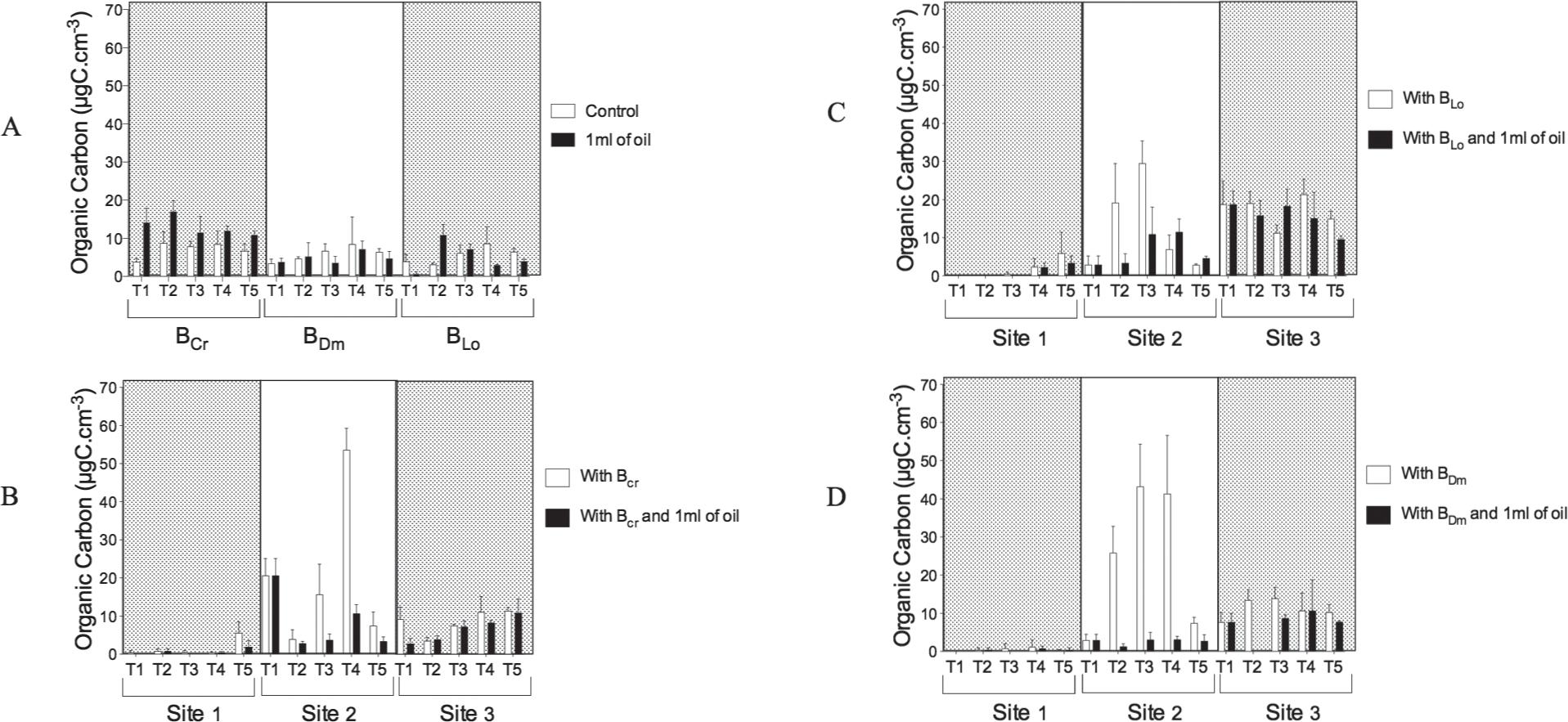Little is known about the role of protists and bacteria interactions during hydrocarbon biodegradation. This work focused on the effect of oil on protists from three different locations in Guanabara Bay and bacteria from Caulerpa racemosa (BCr), Dictyota menstrualis (BDm) and Laurencia obtusa (BLo) during a 96 h bioassay. Cryptomonadida (site 1, 2 and 3), Scuticociliatida (site 2) and Euplotes sp.1 and Euplotes sp.2 (site 3) appeared after incubation. The highest biomass observed in the controls was as follows: protist site 3 (6.0 µgC.cm–3, 96 h) compared to site 3 with oil (0.7 µgC.cm–3, 96 h); for bacteria, 8.6 µgC.cm–3(BDm, 72 h) and 17.0 µgC.cm–3(BCr with oil, 24 h). After treatment, the highest biomasses were as follows: protists at site 1 and BLo, 6.0 µgC.cm–3 (96 h), compared to site 1 and BLo with oil, 3.31 µgC.cm–3 (96 h); the bacterial biomass was 43.1 µgC.cm–3 at site 2 and BDm (96 h). At site 3 and BLo with oil, the biomass was 18.21 µgC.cm–3 (48 h). The highest biofilm proportions were observed from BCr 1.7 µm (96 h) and BLo with oil 1.8 µm (24 h). BCr, BLo and BDm enhanced biofilm size and reduced the capacity of protists to prey.
bacterial consortia; biomass; free living protist; Guanabara Bay; microbial loop; petroleum




